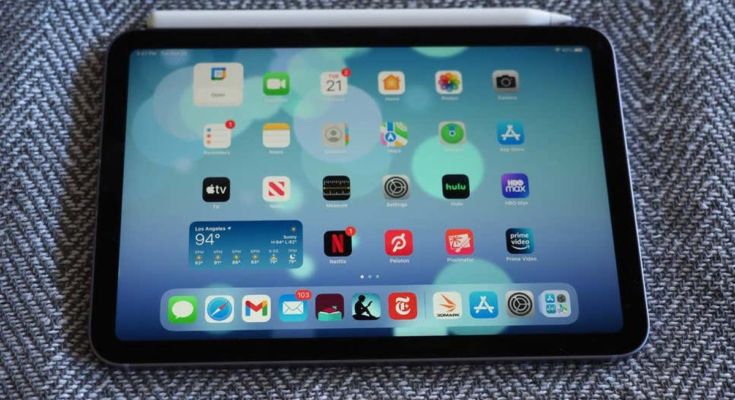
The iPad Mini 6 is arguably the most interesting new device Apple released this month, but unfortunately, now it seems some new iPad Minis are suffering from an issue that causes its screen to look wobbly when scrolling.
Reports of issues with the iPad Mini 6’s screen have started popping up from a handful of owners, including one who reached out to 9to5Mac and the Verge’s Dieter Bohn, who posted a slow-mo video of the issue in question on Twitter.
While the iPad Mini 6’s jelly screen may be subtle enough for many people to overlook the issue, the source of the problem appears to be that when scrolling, different areas of the screen scroll at different speeds, which can cause images and most noticeably text to appear as if it’s wobbling or bouncing.
One reader who spoke to 9to5Mac said that when they tried to get their new iPad Mini replaced at an Apple Store, they noticed that all the demo iPad Mini units also suffered from wobbly screens, which suggests that the issue could be present across a large number of new iPad Minis.
G/O Media may get a commission

price drop
Galaxy Tab S7 12.4″
Over 50% off from the original list price!
“Best Android Tablet Around” – Gizmodo
Trade-in and get $350 instant credit
Currently, it’s not clear what causes the new iPad Mini’s screen to wobble, but whatever the reason, the issue is definitely a downer considering the iPad Mini 6’s new 8.3-inch display is one of the tablet’s biggest upgrades for 2021.
That said, this isn’t the first time we’ve seen a device with an unintended wobbly screen, the OnePlus 5 from 2017 suffered from a similar affliction which we later learned was caused by a display that was installed upside down. And while Apple’s typical attention to detail means that it’s somewhat unlikely that an upside-down display is the source of the new iPad Mini’s issues, no company is completely immune from making mistakes.
Gizmodo has reached out to Apple for more information on the new iPad Mini’s wobbly screen, and we will update this story when we hear back.
Meanwhile, in other reports from new iPhone 13 owners, it seems that replacing the screen—even when using official replacement parts—can cause the phone’s Face ID system to stop working. According to video from YouTube channel Phone Repair Guru, swapping out an iPhone 13’s original display prompted a warning message that says “Unable to verify this iPhone has a genuine Apple display,” which ultimately results in Face ID being disabled.
This development is a sad turn of events for authorized third-party repair services, especially with Apple slowly working to expand its Independent iPhone Repair Program. While it’s possible Apple could release a software update that could resolve the issue, it’s also possible that the issue could be a result of Apple’s security protocols, with Apple wanting third-party repair services to replace both the screen and the iPhone 13’s Face ID sensors at the same time to help maintain security across the phone’s display components during the repair.
Regardless, with two different issues impacting both the new iPad Mini and the latest iPhone, here’s hoping Apple will follow up with additional info or solutions to address the latest round of reports.



